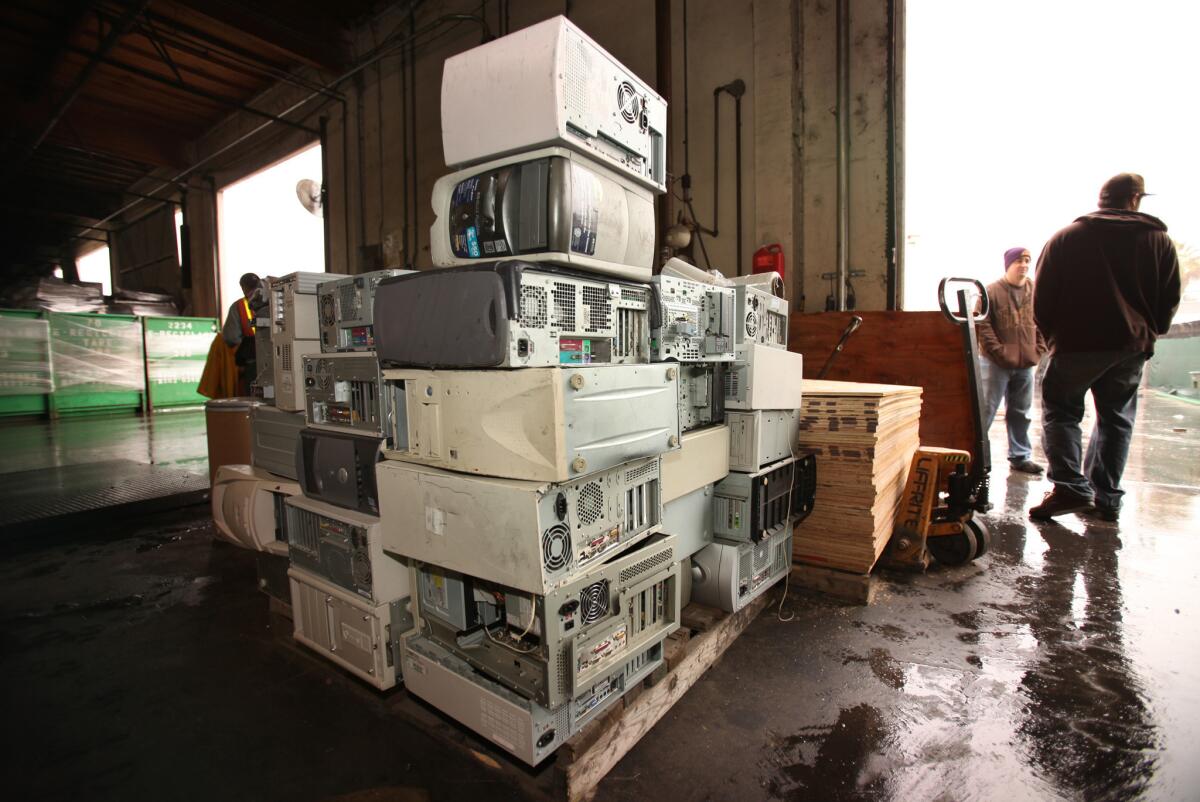In 2022, Samsung faced over 30 class action lawsuits in the United States alone. I remember when I first heard about these legal battles. It was eye-opening to realize how widespread the issues were with Samsung products. As someone who’s owned several Samsung devices over the years, I couldn’t help but wonder about the experiences of other consumers and the impact these lawsuits might have on the company and the industry as a whole.
The Refrigerator Saga
Samsung’s refrigerator line has been at the center of multiple class action lawsuits. These legal actions primarily focus on ice maker defects and overall appliance performance issues. The problems have caused significant frustration for consumers and led to widespread complaints.
According to a 2023 survey, over 2,500 complaints were lodged with Samsung regarding refrigerator issues, with 78% of those complaints specifically mentioning ice maker problems. This staggering number of complaints highlights the scale of the issue and why it’s become such a focal point for legal action.
The most commonly cited models in these lawsuits are Samsung French door refrigerators manufactured between 2013-2017. Defects include ice maker malfunction, water leakage, and temperature control issues. These aren’t just minor inconveniences – they’re serious problems that can significantly impact daily life and potentially cause property damage.
For more information on how defective products can lead to legal action, check out our guide on product liability claims in truck accidents. While focused on vehicles, many of the principles apply to appliance defects as well.
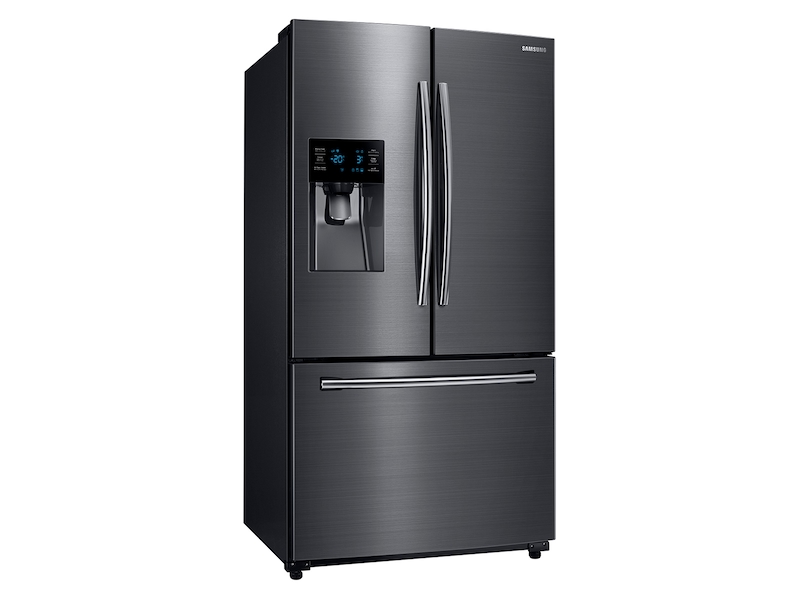
Source: samsung.com
Ice Maker Meltdown
The ice maker issues in Samsung refrigerators have been a persistent source of frustration for consumers. These problems have led to widespread complaints and ultimately resulted in legal action against the company.
Ice makers in affected models often freeze over, requiring manual defrosting. Some consumers report complete ice maker failure within months of purchase. This isn’t just an inconvenience – it’s a significant malfunction in a key feature of the appliance.
Repair costs for ice maker issues can range from $200-$500, often outside of warranty periods. This financial burden on consumers has been a major point of contention in the lawsuits. Many argue that they shouldn’t have to pay for repairs on a relatively new appliance, especially when the issue seems to be widespread.
The Smith family purchased a Samsung French door refrigerator in 2015. Within six months, they noticed their ice maker frequently jammed and produced loud noises. Despite multiple repair attempts, the issue persisted, leading them to join a class action lawsuit in 2018. Their experience is just one of many similar stories that have fueled these legal actions.
Defrost Dilemma
Many Samsung refrigerators allegedly suffer from defective defrost systems. This issue causes ice buildup and reduces the overall functionality of the appliance.
Defrost systems are designed to melt frost buildup on evaporator coils. When these systems fail, it can lead to a cascade of problems. Faulty defrost systems can lead to excessive ice accumulation, blocking air flow. This not only affects the refrigerator’s cooling efficiency but can also damage other components.
Some models require frequent manual defrosting, contrary to advertised “frost-free” features. This discrepancy between advertised features and real-world performance is a key point in many of the lawsuits. Consumers argue that they’re not getting the product they were promised.
| Defrost System Issue | Impact on Refrigerator | Consumer Complaint |
|---|---|---|
| Faulty heating element | Incomplete defrosting | Ice buildup |
| Malfunctioning timer | Irregular defrost cycles | Temperature fluctuations |
| Blocked drain | Water leakage | Floor damage |
Water Leakage Woes
Consumers have reported water leakage issues with their Samsung refrigerators. These leaks can potentially cause property damage and raise safety concerns in the home.
Water leaks often originate from the ice maker or water dispenser components. Faulty water inlet valves or cracked water lines are common causes of leaks. What starts as a small drip can quickly escalate into a serious problem.
Prolonged leaks can lead to floor damage, mold growth, and potential electrical hazards. I’ve heard from homeowners who’ve had to replace flooring or deal with mold remediation due to undetected leaks. It’s not just about the inconvenience – these issues can be costly and potentially dangerous.
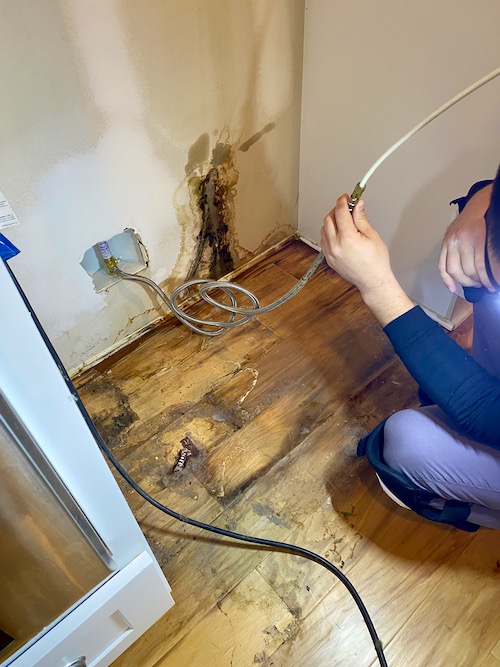
Source: theemerginghome.com
Consumer Complaints to Legal Action
The journey from individual consumer complaints to full-fledged class action lawsuits against Samsung has been a complex process. It involves gathering evidence, finding commonalities among affected consumers, and navigating the legal system.
Class action lawsuits typically require a minimum of 40 plaintiffs with similar complaints. This threshold ensures that the issue is widespread enough to warrant collective legal action. Lawyers must demonstrate that the defects are widespread and not isolated incidents. This often involves collecting and analyzing hundreds or even thousands of consumer reports.
The certification process for a class action lawsuit can take several months to years. During this time, lawyers work to build a strong case, gathering technical evidence and consumer testimonies. It’s a meticulous process that requires patience and persistence.
Social Media’s Role
Social media platforms have played a significant role in amplifying consumer complaints about Samsung refrigerators. This increased visibility has accelerated the path to legal action.
Platforms like Facebook and Reddit host large communities of dissatisfied Samsung customers. These online spaces allow consumers to share their experiences, compare notes, and organize their efforts. Social media evidence can be used to demonstrate the widespread nature of product issues. Lawyers often comb through these platforms to gather additional evidence and identify potential plaintiffs.
Viral posts about Samsung refrigerator problems have garnered millions of views. I’ve seen some of these posts myself, and the sheer number of comments and shares is staggering. It’s a testament to how widespread these issues have become and how social media has given consumers a powerful voice.
Class Certification Challenges
Certifying a class action lawsuit against Samsung involves several legal hurdles. One of the main challenges is demonstrating common issues among the affected consumers.
Lawyers must prove that the defects are consistent across a specific range of Samsung models. This often requires extensive technical analysis and expert testimony. Expert testimony is often required to establish the technical nature of the alleged defects. These experts can help explain complex engineering concepts to judges and juries in understandable terms.
The court considers factors such as numerosity, commonality, typicality, and adequacy of representation. These legal standards ensure that the class action is the appropriate method for addressing the complaints. It’s a rigorous process designed to filter out frivolous lawsuits while allowing legitimate collective actions to proceed.
Model Specificity
Lawyers face the challenge of specifying which Samsung refrigerator models are included in the class action. This process requires careful research and documentation.
Model numbers and manufacturing dates must be precisely identified for inclusion in the lawsuit. This level of detail is crucial for defining the scope of the class and ensuring that all affected consumers are represented. Variations in defects across different models can complicate the class certification process. Lawyers must navigate these differences while still demonstrating a common issue across the class.
Subclasses may be formed for different model ranges or specific defect types. This approach allows for more tailored legal strategies while still maintaining the benefits of a class action.
In the 2019 Samsung refrigerator class action, lawyers identified 32 specific model numbers affected by ice maker issues, spanning production dates from 2013 to 2017. This precise identification was crucial in establishing the scope of the lawsuit. It’s this level of detail that can make or break a class action case.
Beyond Refrigerators: Expanding Litigation Landscape
While refrigerator issues dominate Samsung’s class action landscape, other product lines have also faced legal challenges. The scope of Samsung’s legal battles in the consumer electronics sector is quite broad.
Samsung’s smartphone, TV, and washing machine divisions have all faced class action lawsuits. Product liability, false advertising, and breach of warranty are common claims across different product lines. It’s a reminder that even a tech giant like Samsung isn’t immune to quality control issues across its diverse product range.
A 2024 consumer electronics industry report revealed that Samsung faced 15% more class action lawsuits than its nearest competitor across all product categories. This statistic is both surprising and concerning. It raises questions about Samsung’s quality control processes and how they compare to industry standards.
For insights into how product liability cases can impact a company’s reputation and financial standing, see our analysis of high-profile vehicle accident settlements. While focused on the automotive industry, many parallels can be drawn to consumer electronics litigation.
Smartphone Controversies
Samsung’s smartphone division has faced its share of legal troubles. These range from the infamous Galaxy Note 7 battery issues to allegations of planned obsolescence through software updates.
The Galaxy Note 7 recall in 2016 affected approximately 2.5 million devices worldwide. It was a massive blow to Samsung’s reputation and finances. Planned obsolescence claims often involve allegations of intentional performance degradation through software updates. These claims suggest that Samsung deliberately slows down older models to encourage upgrades, a practice that has sparked significant consumer backlash.
Battery life and overheating issues are common complaints in smartphone-related lawsuits. These problems not only affect user experience but can also pose safety risks. I remember the anxiety surrounding the Note 7 recall and how it made many consumers, myself included, more wary of potential safety issues in smartphones.
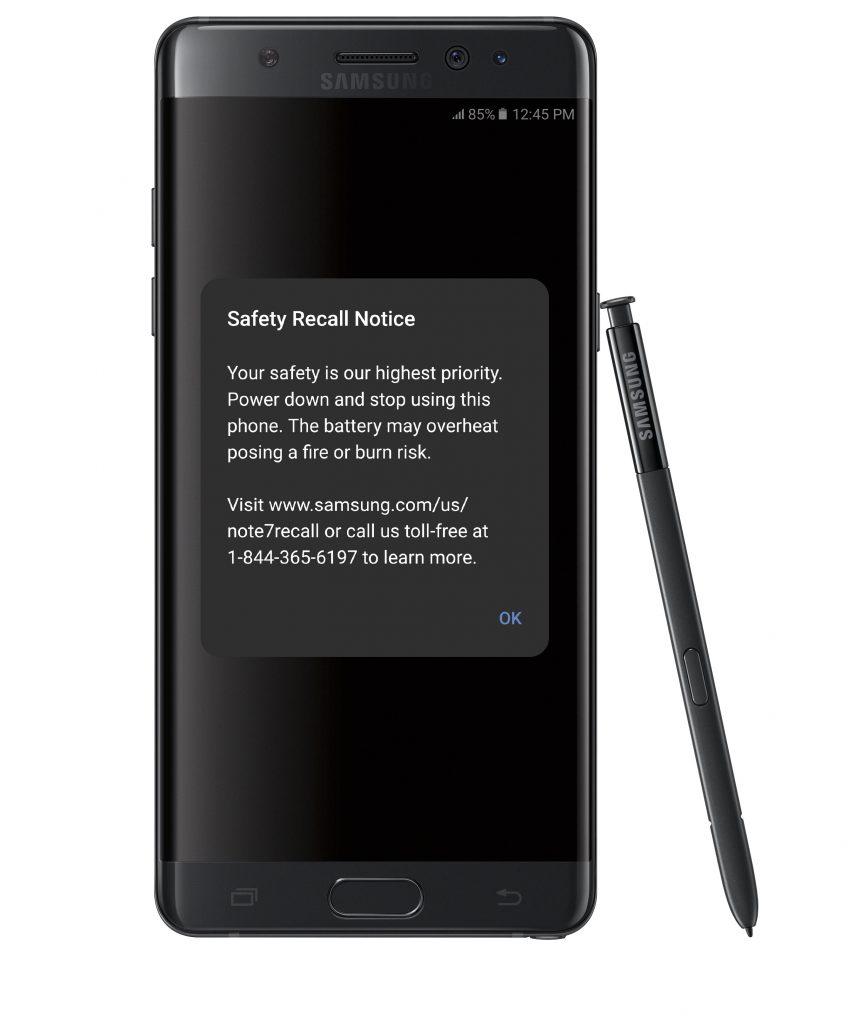
Source: 3blmedia.com
The Note 7 Fiasco
The worldwide impact of the Galaxy Note 7 recall led to significant legal actions against Samsung. This incident had far-reaching consequences for the company’s reputation and finances.
Samsung initially recalled 2.5 million Note 7 devices due to battery explosion risks. The scale of this recall was unprecedented in the smartphone industry. The recall and subsequent discontinuation cost Samsung an estimated $5.3 billion. It was a financial hit that reverberated through the company’s entire mobile division.
Class action lawsuits claimed damages for lost data, inconvenience, and carrier fees. Consumers argued that they were left without essential devices and faced unexpected costs. The Note 7 incident serves as a stark reminder of how quickly a product issue can escalate into a global crisis.
Software Update Allegations
There have been investigations into claims that Samsung intentionally slowed down older smartphone models through software updates. These allegations form the basis of several class action lawsuits.
Plaintiffs allege that Samsung pushes updates that degrade performance on older models. This practice, if proven true, could be seen as a form of planned obsolescence. Battery life reduction and app slowdowns are common complaints after software updates. Many users report that their once-speedy devices become sluggish after updating to newer software versions.
Proving intentional obsolescence often requires extensive technical analysis of update code. It’s a complex process that involves examining lines of code to determine if there’s deliberate performance throttling. These cases highlight the growing scrutiny of tech companies’ software practices and their impact on consumer rights.
Television and Monitor Disputes
Class action lawsuits related to Samsung’s TV and monitor products have focused on image quality and durability issues. These cases highlight the complexities of marketing high-tech display technologies.
QLED (Quantum Dot LED) technology has been a focal point of recent TV-related lawsuits. Consumers have questioned whether the technology lives up to its marketing claims. Burn-in issues on OLED TVs have also led to legal action against Samsung. This problem, where static images can become permanently etched into the screen, has been a persistent concern for high-end TV buyers.
Monitor-related lawsuits often involve claims of false advertising regarding refresh rates or response times. These technical specifications are crucial for gamers and professionals who rely on high-performance displays. When products don’t meet advertised specs, it can lead to significant disappointment and legal action.
Quantum Dot Quandary
Lawsuits alleging misrepresentation of color accuracy in Samsung’s QLED TV lineup have emerged. These cases explore the technical aspects of display technology and marketing claims.
QLED technology uses quantum dots to enhance color reproduction in LED-LCD displays. It’s a complex technology that promises superior color performance. Lawsuits claim that Samsung overstated the color volume capabilities of QLED TVs. This discrepancy between marketing claims and real-world performance is at the heart of these legal disputes.
Color gamut measurements and industry standards play a crucial role in these disputes. Experts often conduct detailed analyses to determine if the TVs meet the advertised color specifications. It’s a technical battleground where marketing hype meets scientific scrutiny.

Source: researchgate.net
Legal Strategies and Corporate Response
Samsung’s approach to these class action lawsuits involves a complex interplay of legal defense, technical explanations, and public relations efforts. The company often employs a multi-pronged defense strategy, combining legal, technical, and PR efforts.
The company’s responses typically involve a mix of denials, technical explanations, and settlement offers. It’s a delicate balance between defending their products and maintaining consumer trust. Samsung must navigate these challenges while also considering the long-term impact on their brand reputation.
In my observation, Samsung’s legal team has been particularly adept at challenging the commonality of defects across different product models. This strategy aims to prevent class certification by arguing that the issues aren’t widespread or consistent enough to warrant a class action.
Samsung’s Defense Playbook
Analyzing Samsung’s typical legal strategies in facing class action lawsuits reveals a pattern of denial, delay, and strategic settlements. The company often balances legal defense with brand protection.
Samsung frequently challenges the commonality of defects across different product models. This approach aims to fragment the plaintiff group and make class certification more difficult. The company often argues that user error or improper maintenance caused the alleged issues. This defense shifts some responsibility back to the consumers, potentially weakening the case against Samsung.
Settlement offers may include extended warranties, repair programs, or partial refunds. These offers are often strategic moves to resolve issues quickly and avoid prolonged litigation. I’ve seen cases where Samsung has offered free repairs or replacements to affected customers, even before a lawsuit reaches its conclusion
| Defense Strategy | Description | Potential Outcome |
|---|---|---|
| Technical Rebuttal | Presenting expert testimony on product design | Disprove defect claims |
| Commonality Challenge | Arguing issues are not widespread | Prevent class certification |
| Settlement Offers | Proposing repairs or partial refunds | Avoid prolonged litigation |
Technical Rebuttals
Samsung leverages technical expertise to counter consumer claims in court. This approach involves presenting detailed engineering explanations and expert witness testimony.
The company frequently brings in engineers and industry experts to testify about product design and functionality. These professionals provide in-depth analyses of the alleged defects, often arguing that the issues are within normal operating parameters or result from misuse.
Technical rebuttals may involve demonstrating proper product use and maintenance procedures. Samsung sometimes conducts its own studies to counter plaintiffs’ technical claims. These studies aim to provide scientific evidence that contradicts the allegations of widespread defects.
Settlement Strategies
Samsung’s approach to settling class action lawsuits aims to minimize financial and reputational damage. The company often weighs the costs of litigation against the benefits of early settlement.
Settlement terms may include cash payments, extended warranties, or free repairs for affected consumers. Samsung sometimes offers different settlement options based on the severity of the alleged defect. This tiered approach allows for more flexibility in addressing various consumer complaints.
Non-disclosure agreements are often part of settlement terms to limit public discussion of issues. While these agreements help Samsung control the narrative, they’ve also been criticized for potentially hiding important information from other consumers.
Consumer Advocacy and Legal Representation
Consumer advocacy groups and law firms play a crucial role in organizing and representing plaintiffs in Samsung class actions. These entities help level the playing field against large corporations.
Consumer advocacy groups often conduct independent testing to support class action claims. Their findings can provide valuable evidence to strengthen the case against Samsung. Law firms specializing in consumer electronics litigation have developed specific expertise in Samsung cases. This specialization allows them to navigate the complex technical and legal aspects of these lawsuits more effectively.
Contingency fee arrangements are common, allowing consumers to pursue claims without upfront legal costs. This approach makes it possible for individuals who might otherwise be unable to afford legal representation to seek justice.
Online Communities and Forums
Online communities have become instrumental in gathering evidence and coordinating legal efforts against Samsung. These digital grassroots movements provide a platform for affected consumers to share experiences and information.
Forums like Reddit and Facebook groups often serve as initial gathering points for affected consumers. Users share troubleshooting tips, repair costs, and interactions with Samsung customer service. These discussions create a wealth of anecdotal evidence that can be valuable in building a case.
Lawyers sometimes use these forums to identify potential class members and gather evidence. The collective experiences shared in these online spaces can help attorneys understand the scope and nature of the issues affecting Samsung products.
Specialized Law Firms
Law firms that have developed expertise in handling class action lawsuits against major electronics manufacturers like Samsung play a significant role in these cases. Their specialized knowledge can be crucial in navigating complex technical and legal issues.
These firms often have in-house technical experts to analyze product defects. This expertise allows them to build stronger cases by understanding the intricacies of the alleged defects. Lawyers may collaborate with consumer electronics engineers to build stronger cases. This collaboration ensures that the legal arguments are grounded in solid technical understanding.
Specialized firms often have experience with similar cases against other manufacturers, providing valuable insights. This broader perspective can be advantageous in developing effective legal strategies against Samsung.
The Future of Consumer Electronics Litigation
Looking ahead, the potential long-term impacts of these class action lawsuits on Samsung, the consumer electronics industry, and consumer rights are significant. These cases may shape future regulations and consumer behavior.
Outcomes of current lawsuits may influence future product liability laws in the tech sector. We might see more stringent regulations around product testing and quality control. Increased scrutiny on marketing claims for advanced technologies is likely. Companies may need to be more cautious and precise in how they advertise product features and capabilities.
A 2024 legal industry report predicts a 30% increase in class action lawsuits against consumer electronics companies over the next five years, with a focus on IoT devices and AI-powered products. This trend suggests that as technology becomes more complex and integrated into our daily lives, the potential for legal disputes will likely grow.
Regulatory Implications
The outcomes of Samsung class actions might influence future regulations in the consumer electronics industry. This could lead to stricter standards and more oversight.
Regulatory bodies like the FTC may impose stricter guidelines on product performance claims. We might see more rigorous testing requirements before products can be marketed with certain features or capabilities. New regulations could require more rigorous pre-market testing for consumer electronics. This could potentially slow down product releases but might result in more reliable products reaching consumers.
Enhanced warranty requirements may be implemented to protect consumers from defective products. These changes could shift more responsibility onto manufacturers to ensure long-term product reliability.
Enhanced Disclosure Requirements
Potential new regulations may require clearer disclosure of product limitations and potential issues to consumers. This could change how companies market and sell their products.
Companies may be required to provide more detailed information about product lifespan and potential defects. This increased transparency could help consumers make more informed purchasing decisions. Standardized testing and reporting of product performance may become mandatory. This could level the playing field among manufacturers and make it easier for consumers to compare products.
Labels similar to energy efficiency ratings could be introduced for durability and reliability. Such a system would give consumers a quick way to assess the expected longevity and reliability of electronic products.
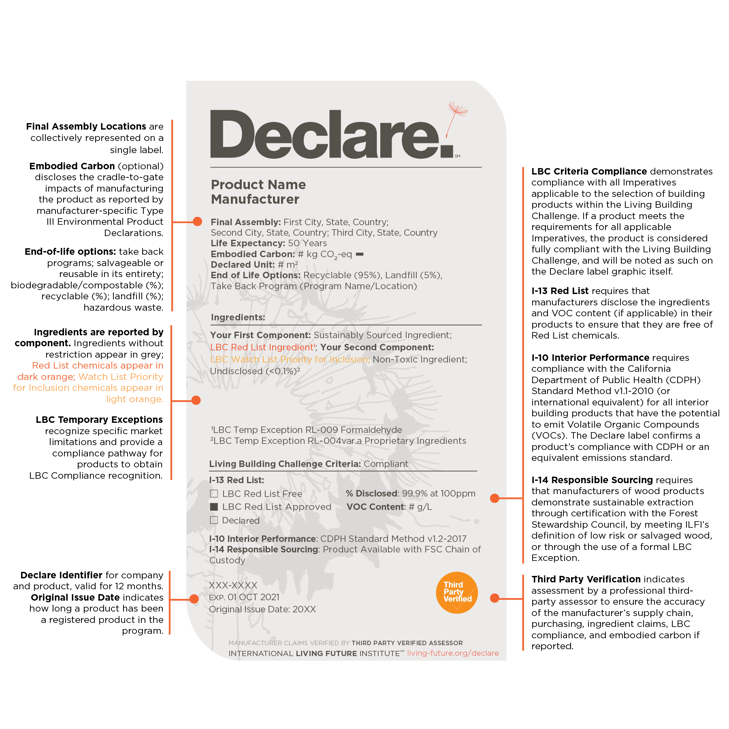
Source: blog.exchange.3eco.com
Consumer Behavior Shifts
Class action lawsuits affect consumer perceptions and purchasing decisions in the electronics market. This shift in behavior could have long-lasting impacts on brand loyalty and market dynamics.
Consumers may become more skeptical of marketing claims from major electronics brands. This increased skepticism could lead to more research-driven purchasing decisions. Increased demand for third-party product testing and reviews is likely. Independent reviewers and testing organizations may gain more influence in the consumer electronics market.
Extended warranty purchases may increase as consumers seek additional protection. This trend could create new opportunities for insurance providers and warranty companies in the electronics sector.
The Rise of Third-Party Reviews
The increasing importance of third-party product reviews and testing in consumer decision-making is a notable trend. Consumers are relying more on independent sources for product information.
Professional review sites are developing more rigorous long-term testing protocols. These extended testing periods aim to uncover issues that might not appear in initial product reviews. Consumer-generated content on platforms like YouTube is gaining credibility. Many consumers now turn to long-term user reviews before making purchasing decisions.
Some third-party testing organizations are developing their own certification programs. These certifications could become important factors in consumer purchasing decisions, similar to Energy Star ratings for appliances.
TechReview, a popular YouTube channel, gained over 2 million subscribers in 2024 by conducting long-term durability tests on Samsung and other major brand electronics. Their 6-month refrigerator test series became a viral sensation, influencing purchasing decisions for many consumers.
International Implications
Samsung’s class action lawsuits in the US have far-reaching consequences on the company’s operations and reputation worldwide. These legal battles affect Samsung’s global strategy and brand perception.
Outcomes of US lawsuits often influence legal actions in other countries. A successful class action in the US can spark similar lawsuits in other jurisdictions. Samsung’s global supply chain and quality control processes may undergo significant changes. The company might implement more stringent quality checks and standardize processes across different markets to prevent similar issues worldwide.
Cross-Border Legal Challenges
Samsung navigates different legal systems when facing similar complaints across multiple countries. This creates a complex web of jurisdictional issues and varying legal standards.
Class action laws differ significantly between countries, affecting lawsuit viability. In some nations, class actions may not be permitted, forcing consumers to pursue individual claims. Evidence gathered in one jurisdiction may not be admissible in another. This can complicate Samsung’s defense strategy and require tailored approaches for each country.
Samsung must tailor its legal strategies to comply with local laws and regulations. This often involves working with local legal teams who understand the nuances of each jurisdiction’s legal system.
Cultural Perceptions of Litigation
Cultural attitudes towards litigation in different countries affect Samsung’s global strategy and brand perception. The company must navigate these varying perspectives in its response to product issues.
In some countries, litigation is seen as a last resort, while in others it’s more common. This cultural difference can impact how aggressively consumers pursue legal action and how Samsung responds. Samsung’s response to lawsuits may vary based on local cultural norms. In some markets, a more conciliatory approach might be favored, while in others, a robust legal defense might be expected.
Public perception of class actions can influence consumer behavior and brand loyalty. In markets where class actions are viewed positively, Samsung might face more significant reputational challenges.
Environmental Concerns
The environmental impact of defective Samsung products is becoming a factor in class action lawsuits. This raises questions about e-waste and sustainability in the consumer electronics industry.
Defective products contribute to increased e-waste, a growing environmental concern. When appliances fail prematurely, they often end up in landfills, contributing to pollution and resource waste. Lawsuits may start incorporating claims related to environmental impact and sustainability. This could push Samsung and other manufacturers to focus more on product longevity and recyclability.
Recycling and Disposal Issues
The environmental and financial burdens of disposing of large numbers of defective Samsung appliances are significant. This issue is gaining attention in the context of class action lawsuits.
Proper disposal of large appliances like refrigerators involves complex recycling processes. Many components contain hazardous materials that require special handling. Hazardous materials in electronics require specialized handling and disposal methods. This adds to the cost and complexity of dealing with defective products.
The cost of environmentally responsible disposal may be factored into damage claims. Plaintiffs might argue that Samsung should bear the financial burden of properly recycling defective appliances.
Source: latimes.com
Market Competition Dynamics
Samsung’s legal troubles affect its market position and competitors’ strategies. This shifting landscape is reshaping the consumer electronics industry.
Competitors may adjust their product development and quality control processes. They might focus more on reliability and durability to differentiate themselves from Samsung. Market share shifts may occur as consumers react to ongoing lawsuits. Some buyers might turn to alternative brands perceived as more reliable or responsive to customer concerns.
Comparative Advertising
Competitors are leveraging Samsung’s legal issues in their marketing and product development strategies. This has led to more aggressive comparative advertising in the industry.
Rival companies may highlight their products’ reliability in contrast to Samsung’s issues. Marketing campaigns might emphasize longer warranty periods or superior customer service. Some competitors are emphasizing longer warranty periods or better customer service. These tactics aim to capitalize on consumer concerns about product reliability.
Product testing results are being used more prominently in marketing materials. Competitors are showcasing their products’ performance in areas where Samsung has faced criticism.
The Role of Technology in Class Actions
Advancements in technology are shaping the landscape of class action lawsuits against Samsung and other tech giants. These tools are changing how cases are built and presented.
Big data analytics are being used to identify patterns in product failures. This technology allows lawyers to analyze vast amounts of consumer complaint data to identify trends and commonalities. AI and machine learning are assisting in document review and case preparation. These tools can process and categorize thousands of documents much faster than human reviewers.
Data Analytics in Litigation
The use of data analytics to identify patterns in product failures and strengthen class action claims is becoming more common. This technology is changing how lawyers approach these cases.
Large datasets of consumer complaints are analyzed for common failure modes. This analysis can reveal patterns that might not be apparent through manual review. Statistical models are used to estimate the prevalence of defects across product lines. These models can help lawyers demonstrate the widespread nature of alleged defects.
Data visualization tools help present complex technical information to juries. These visual aids can make complicated engineering concepts more understandable to non-experts.
Predictive Modeling
Lawyers are using predictive modeling to estimate the scope of product issues and potential damages. This technology helps in building stronger cases and negotiating settlements.
Machine learning algorithms can predict failure rates based on historical data. This can help lawyers estimate how many products might be affected in the future. Models can estimate potential damages across different scenarios. This information is valuable for both plaintiffs and defendants in settlement negotiations.
Predictive analytics help lawyers determine the viability of class action suits. By analyzing past cases and current data, attorneys can better assess the likelihood of success for a potential lawsuit.
Social Media as Evidence
The increasing importance of social media posts and online reviews as evidence in class action lawsuits is changing how cases are built. This digital evidence presents both opportunities and challenges.
Social media analytics tools are used to gather and analyze consumer complaints. These tools can scrape and categorize thousands of posts related to product issues. Geolocation data from social posts can help establish patterns of product issues. This information can be used to demonstrate the geographic spread of alleged defects.
Sentiment analysis of social media content can gauge public perception of product problems. This analysis can provide insights into the impact of product issues on brand reputation and consumer trust.
Authentication Challenges
Verifying digital testimonies from social media for use in court proceedings against Samsung presents unique challenges. The authenticity and relevance of this evidence must be carefully established.
Forensic tools are employed to verify the origin and integrity of social media posts. These tools can help confirm that posts haven’t been altered or fabricated. Metadata analysis helps confirm the time and location of digital evidence. This information is crucial for establishing the credibility of social media-based claims.
Courts may require additional corroboration for social media-based claims. This might involve matching social media evidence with other forms of documentation or testimony.
Long-Term Brand Recovery Strategies
Samsung’s efforts to rebuild trust and maintain market leadership after high-profile class action lawsuits are crucial. These strategies involve multiple aspects of the company’s operations.
Brand recovery often involves a combination of product improvements and PR campaigns. Samsung might focus on highlighting new quality control measures or innovative features in their products. Long-term strategies may include restructuring quality control processes. This could involve implementing new testing procedures or reorganizing departments responsible for product reliability.
Product Design Overhauls
Samsung incorporates lessons from lawsuits into its product development process. This approach aims to prevent future legal issues and improve overall product quality.
Design teams now focus more on long-term reliability and ease of repair. This shift could result in products that are more durable and easier to service when issues do arise. Stress testing protocols have been enhanced to catch potential issues earlier. These tests might simulate years of use in a shorter timeframe to identify potential long-term problems.
Materials selection now considers long-term durability more heavily. This could lead to the use of higher-quality components, even if it means slightly higher production costs.
Consumer Feedback Integration
Samsung’s strategies for gathering and implementing consumer feedback aim to prevent future legal issues. This proactive approach helps identify and address potential problems early.
Advanced analytics are used to process and categorize customer feedback. This allows Samsung to quickly identify emerging issues and trends in consumer complaints. Product development cycles now include more extensive beta testing phases. This expanded testing involves a wider range of users and usage scenarios to uncover potential issues before mass production.
Real-time monitoring systems track product performance in the field. These systems can alert Samsung to emerging problems, allowing for quicker responses and potentially preventing widespread issues.
Transparency Initiatives
Samsung’s efforts to increase transparency in its operations and product information are part of rebuilding consumer trust. These initiatives aim to provide clearer communication about product capabilities and limitations.
More detailed product specifications are now available to consumers. This includes information about expected product lifespans and potential maintenance requirements. Regular updates on known issues and fixes are published on Samsung’s website. This proactive approach keeps consumers informed and demonstrates the company’s commitment to addressing problems.
Third-party audits of manufacturing processes are being conducted and results shared. These audits provide an independent assessment of Samsung’s quality control measures, adding credibility to their claims of improvement.
Extended Warranty Programs
Samsung’s introduction of comprehensive warranty programs serves as a strategy to mitigate future class action risks. These programs aim to address consumer concerns about product reliability.
New warranty terms cover a broader range of potential defects. This expanded coverage aims to reassure consumers and reduce the likelihood of legal action over product failures. Some programs offer proactive replacements for known issue-prone components. This approach addresses potential problems before they lead to product failure or consumer frustration.
Extended coverage periods are being offered for certain product lines. These longer warranties demonstrate Samsung’s confidence in their products’ longevity and reliability.
Learnings Recap
- Class action lawsuits against Samsung span multiple product lines, with refrigerators being a major focus
- Legal strategies involve complex interplay of technical rebuttals, settlement negotiations, and PR management
- Consumer advocacy and online communities play crucial roles in organizing and supporting plaintiffs
- Environmental concerns and e-waste issues are emerging as factors in consumer electronics litigation
- Technology, including data analytics and social media evidence, is reshaping how class actions are conducted
- Samsung’s long-term recovery strategies focus on product design improvements, consumer feedback integration, and increased transparency
As we’ve explored the complex world of Samsung class action lawsuits, it’s clear that these legal battles have far-reaching implications for consumers, the company, and the entire consumer electronics industry. The issues raised in these lawsuits highlight the importance of product reliability, corporate responsibility, and consumer rights.
If you’ve been affected by any of the issues discussed in this article, it’s crucial to understand your rights as a consumer. While Ultra Law specializes in personal injury cases, our commitment to client advocacy and justice aligns with the principles at play in consumer electronics litigation. We understand the challenges individuals face when going up against large corporations.
Although we may not directly handle Samsung class action lawsuits, our experience in building strong cases and negotiating fair settlements could be valuable in similar consumer protection scenarios. If you’re dealing with a defective product or feel your consumer rights have been violated, don’t hesitate to reach out. We can provide guidance on your options and potentially connect you with resources specific to your situation.
Remember, your voice matters in holding companies accountable and ensuring fair treatment for all consumers. Contact Ultra Law today for a consultation on how we can help you navigate complex legal challenges and protect your rights.



